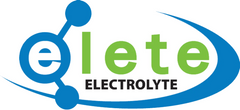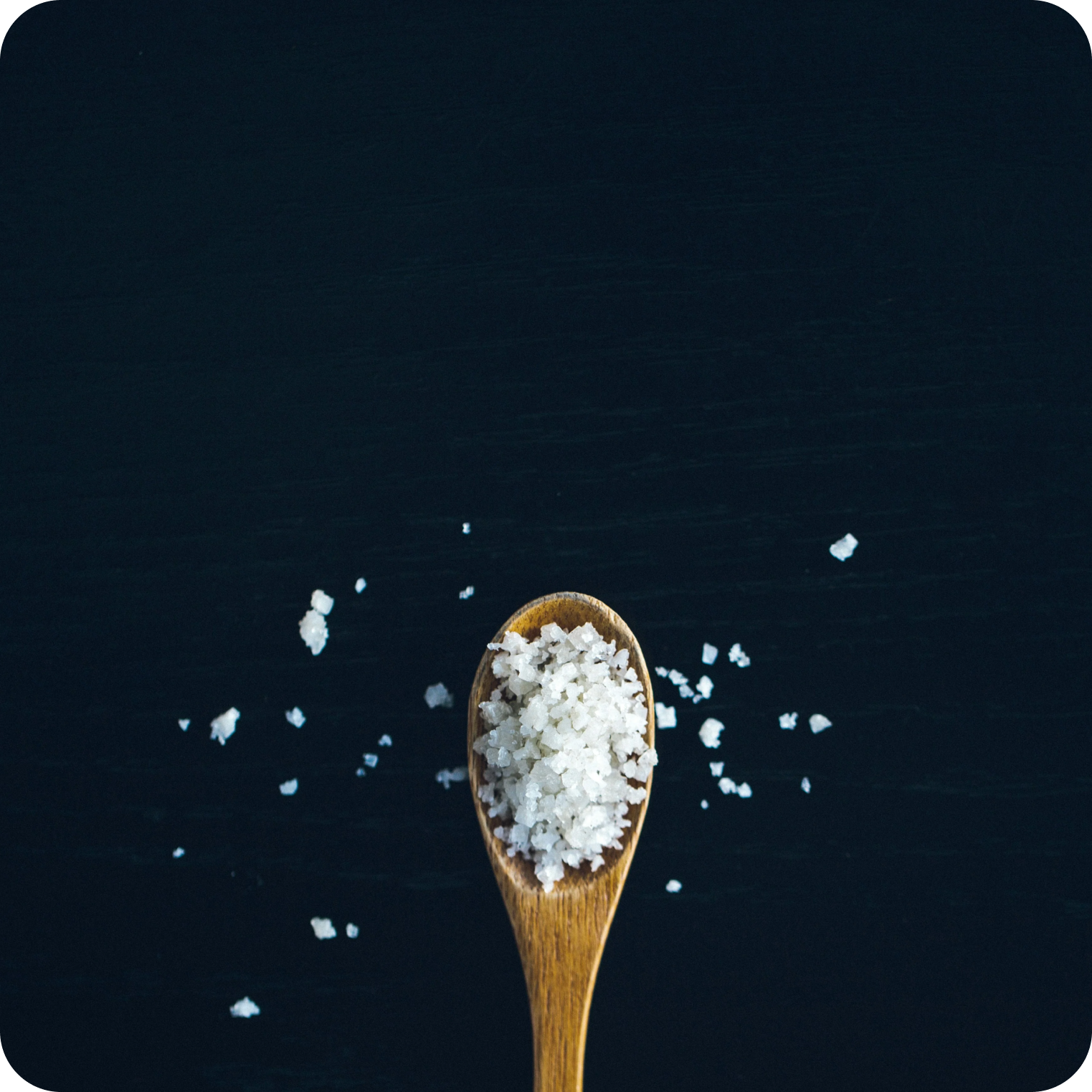Many athletes as well as others exposed to heat stress consume salt supplements to promote fluid replacement, prevent hyponatremia and dehydration, or ward off heat fatigue. While it is true that supplementing with salt can help reduce sodium depletion from sweat and help maintain adequate fluid levels in the body, supplementing with sodium alone is not enough to satisfy your body’s electrolyte requirements and, in fact, may cause additional problems (e.g., nausea, vomiting, muscle cramps) that significantly interfere with performance.
Rather, a normal water and electrolyte balance, including an intake of other electrolytes such as magnesium, potassium, and chloride, is essential for maintaining the normal function of the body’s systems during physical activity.
Hyponatremia—What is it?
Many athletes will take salt supplements to prevent hyponatremia, which is a low concentration of sodium in the blood. In spite of the abundance of negative press that salt has received, sodium and chloride (NaCl) are both essential minerals.
Hyponatremia is the predominant electrolyte disturbance.1 In healthy individuals, the normal range for serum sodium is 137-147 mEq/L. In hyponatremic individuals, serum sodium levels fall below 137 mEq/L.2 Hyponatremia has killed seemingly healthy individuals every year, yet it can also be less severe but still significantly impede performance. Common symptoms include weakness, agitation, confusion, nausea, or vomiting. Hyponatremia may occur when there is an excessive consumption of water, which dilutes electrolytes in the body, and/or through sweat- induced or other electrolyte loss.
Hyponatremia strikes most often in marathoners or triathletes during long or ultra- distance races in the heat; however, it can happen any time during extended periods of physical activity when an athlete consumes too much fluid and not enough electrolytes. During a Hawaiian Ironman Triathlon, hyponatremia occurred in nearly 30 percent of the triathletes.3
The two primary risk factors for developing hyponatremia are excessive fluid consumption and longer finishing times.4
Salt Supplements—Should You Take Them with a Grain of Salt?
Sodium (Na) is the predominant cation (positively charged element) found in extracellular fluid. It is important in maintaining the proper acid-base balance and in the transmission of nerve impulses.5 Sodium teams with potassium, the chief cation of intracellular fluid, to maintain proper body fluid and acid-base balance in the cells and tissue and maintain blood pressure. Potassium and other electrolytes—such as magnesium and chloride—perform numerous, multifaceted roles in the body. They work in concert with sodium to regulate acid-base, electrolyte, and water balance; conduct nerve impulses; promote normal muscle contraction (including the heartbeat); regulate the transfer of nutrients to cells; and maintain the normal function of the kidneys, heart, and nerve cells. An imbalance of any electrolyte can have far-reaching, serious effects within the body.5
Often, salt tablets and sodium-enhanced beverages, which are touted as electrolyte- replacement beverages, are promoted as an ideal way to replenish the salt that is lost through sweat. There are, however, additional electrolytes that, in conjunction with sodium, are also lost in sweat and this is one of the limitations of salt tablets and many electrolyte-replacement beverages.
An imbalance of any electrolyte can have far-reaching, serious effects within the body.
Of the 21 hyponatremic runners who sought aid in the 2000 Houston Marathon, an analysis of their serum electrolytes also revealed lower potassium and chloride levels than non-hyponatremic runners.4
Returning to the Hawaiian Ironman study that reported a 30 percent incidence of hyponatremia among athletes, researchers also discovered that 20 percent had hypomagnesaemia (low serum magnesium).3
Besides the fact that low electrolyte levels may contribute to hyponatremia, they can also contribute to other performance-induced problems such as muscle cramping and fatigue. One study that analyzed the effects of dehydration on water and electrolyte levels in the body found a 12 percent decrease in muscle magnesium correlating with 5.8 percent dehydration while muscle sodium and chloride levels remained unchanged.6 One of the primary functions of magnesium is that it activates ATP (adenosine triphosphate), which is the energy-carrying molecule the body uses for all forms of energy. A large loss of magnesium in the muscle could interfere with ATP generation, leading to fatigue. Low magnesium levels are also associated with both spasms and cramping.7
If, as some studies suggest, hyponatremia is also associated with lower levels of other electrolytes, how effective is it to supplement with salt rather than a balance of electrolytes?
It has been shown in at least one study that supplementation with salt tablets, i.e., sodium chloride alone, is insufficient to significantly influence changes in serum sodium and plasma volume.8
In addition, taking salt tablets during high-endurance activities can often cause a host of unpleasant to debilitating side effects. Concentrated salt tablets may actually encourage or exacerbate dehydration by lowering the level of water in the blood. Salt tablets can cause water to be pulled from surrounding body tissues (where it is needed during high-endurance activity) into the stomach in order to dilute the salt. For the athlete, the result can be stomach cramps, nausea, or, worse, vomiting.
Additional complications arising from supplementing with sodium alone are imbalanced electrolyte levels. Increased sodium can negatively affect potassium and magnesium levels, which, consequently, could reduce exercise performance and contribute to cramping.
Guidelines for Fluid Replacement
The American College of Sports Medicine (ACSM) recommends that individuals consume 500 ml (~ 17 oz.) of fluid two hours before exercise and that they continue to consume cool drinks in regular intervals to replace water lost through sweating or the maximum amount that can be tolerated. ACSM also recommends adding electrolytes to fluid for prolonged intense exercise lasting longer than one hour.9-10
The best way to replace fluids and the balance of electrolytes lost through sweat is to drink water fortified with elete™ , a pure electrolyte add-in. Why? Electrolytes and water are assimilated in balance with each other, function in balance collectively, and, as the studies cited above demonstrate, are excreted en masse. Therefore, the best way to prevent an electrolyte or fluid imbalance, which can have catastrophic effects, is to consume fluid and electrolytes in proper balance with each other.
Water and Electrolytes, A Winning Combination
In 2004, a study of
The
By consumingelete™ with water during an event or when exposed to heat stress, the individual is metering the consumption of electrolytes with fluids, which reduces the rate of electrolyte depletion and enhances hydration.
Two specific study details include the following:11
- Fire fighters who consumed water alone had to consume significantly higher amounts of water in order to achieve the same level of hydration as the
elete™ group. - The total water intake was 3.2 liters less per person over a day for the
elete™ group.
In other words, the water-only group had to consume more water to maintain whole body hydration and body weight. To apply this study to athletes and outdoor enthusiasts, when people are in an endurance sport or intense heat-stress situation, the key to optimal performance is to maintain adequate hydration so as to support the body’s cooling system and not lower electrolyte levels to the point where they become dangerously low or impair performance.
By consuming
References:
- Hiller WD. Dehydration and hyponatremia during triathlons. Med Sci Sports Exerc. 1989 Oct; 21(5 Suppl): S219-21.
- Horne MM and Swearingen PL. Fluids, Electrolytes, and Acid-Base Balance, Mosby—Year Book, Inc., St. Louis, MO, 1993, 89.
- O’Toole Ml, Douglas PS, Laird RH, Hiller DB. Fluid and electrolyte status in athletes receiving medical care at an ultradistance triathlon. Clin J Sport Med. 1995; 5(2):116-22.
- Hew TD, Chorley JN, Cianca JC, Divine JG. The incidence, risk factors, and clinical manifestations of hyponatremia in marathon runners. Clin J Sport Med. 2003 Jan; 13(1):41-7.
- National Research Council, Recommended Dietary Allowances, National Academy Press, Washington, D.C., 1989.
- Costill DL, Cote R, Fink W. Muscle water and electrolytes following varied levels of dehydration in man. J Appl Physiol. 1976 Jan; 40(1):6-11.
- Brilla LR and Lombardi VP. Magnesium in exercise and sport, in Macroelements, Water, and Electrolytes, Driskell, J.A., and Wolinsky I., Eds. CRC Press, Boca Raton, FL, 1999, chap.4.
- Speedy DB, Thompson JM, Rodgers I, Collins M, Sharwood K, Noakes TD. Oral salt supplementation during ultradistance exercise. Clin J Sport Med. 2002 Sep; 12(5):279-84.
- Convertino VA, Armstrong LE, Coyle EF, Mack GW, Sawka MN, Senay LC Jr., Sherman WM. American College of Sports Medicine position stand. Exercise and fluid replacement. Med Sci Sports Exerc. 1996 Jan; 28(1): I-vii).
- Von Duvillard SP, Braun WA, Markofski M, Beneke R, Leithauser R. Fluids and hydration in prolonged endurance performance. Nutrition. 2004 Jul-Aug; 20(7- 8):651-6.
- Ruby, BC. “Effects of water and water + electrolytes on changes in body temperature, hydration status and drinking behaviors during arduous wildfire suppression.” Mineral Resources International, Ogden, UT, 2004.

